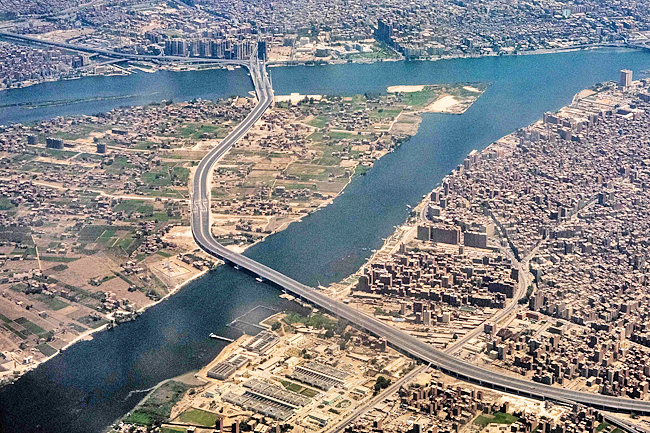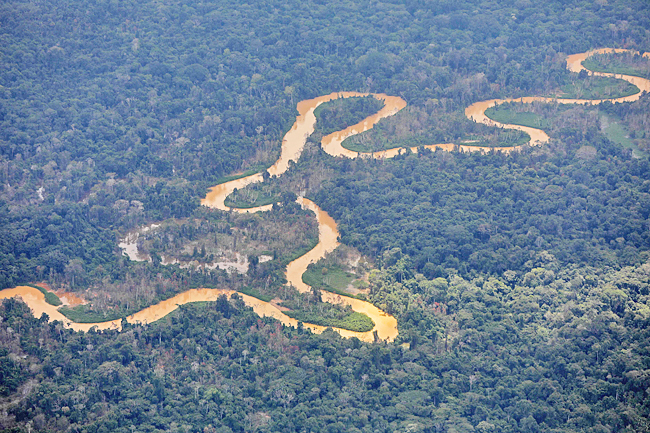RIO DE JANEIRO (THE WASHINGTON POST) – Guinness World Records, Britannica and the United States (US) government agree: The longest river in the world is the mighty Nile – the “father of African rivers”, Britannica said.
But in Brazil, home to the powerful Amazon River, which cleaves South America more than slithers across it, the Nile’s standing is slightly lower.
“Second biggest river in the world,” scoffs Portuguese-speaking Wikipedia.
“The Amazon is the most extensive in the world,” declared the educational website Brazil School.
At a time when so much of the world has been measured, so many arguments settled – tallest mountain (Everest), largest ocean (Pacific), most venomous snake (western taipan) – the question of which river is the world’s longest remains, somehow, tantalisingly beyond our reach. What appears at first to be a basic geographic query, a matter of cold science and hard numbers, has instead morphed into a cartographical dispute that has divided the scientific and exploration communities along the fault lines of national identity, units of measurement and even personal pique.


THE NILE – OR THE AMAZON?
“The Nile is definitely longer than the Amazon,” said an English-Canadian adventurer Sir Christopher Ondaatje, who’s journeyed to what he said is the river’s far-flung source. “And there is no doubt about that.”
“The Amazon is longer than the Nile,” counters the former geosciences director of the Brazilian Institute of Geography and Statistics Guido Gelli. “I have no doubt in my mind.”
According to the US Geological Survey and Britannica, the difference between their lengths is just 132 miles – less than the drive from Washington to Philadelphia. They have the Nile’s 4,132 miles barely edging out the Amazon’s 4,000.
To try to settle the dispute – a task that some assert will never be possible – a team of international researchers and explorers are now planning to voyage the length of the Amazon. Backed by organisations including the Explorers Club, which has supported some of history’s most daring expeditions, and other groups, the team is to set out next spring in the most distant reaches of the Peruvian Andes, the mountains where the Amazon is said to begin. For the next seven months, members will map and measure the river’s entire course until it reaches the Atlantic Ocean.
Then, if all goes smoothly, a journey down the Nile – which might, after all, also be mismeasured – could be next.
“Mount Everest has been climbed thousands of times,” said Brazilian explorer Yuri Sanada, who is leading the mission. “More than 1,500 people have rowed or paddled across an ocean. But to kayak down the entire Amazon? That has been done fewer than 10 times, and all of them were for adventure’s sake. To document the entire river, its geography and biodiversity – this has never been done.”
The journey will not be without its dangers. Drug traffickers use the Amazon as a smuggling route. Sections are pervaded by river pirates. In 2018, six men were charged in the murder of British canoeist Emma Kelty, who was sexually assaulted and killed halfway through a solo journey down the river’s length.
But, Sanada said, the risks are worth the expected results. Not only to showcase the extraordinary wildlife of a river that anchors a region being pushed to the brink of collapse by illegal deforestation, but also to try to solve one of the world’s last geographical mysteries.
“Which river,” he asked, “is the longest in the world?”
It’s not an easy question to answer. Rivers, more than most geographic features, are ever changing and prone to multiple interpretations. Floods wash away bends. Shorelines swivel.
Man-made canals divert their paths.
Then there’s the question of where a river begins. Is it at the headwaters of the largest channel of water – the “source stream?” Or is it the “most distant source”, the faraway birthplace of the most distant tributary?
Equally controversial is deciding where the river ends. Many geographers think it’s where the mainstream hits the mouth. But others say it’s where the longest distributary comes to its end.
“It’s the wild west,” said a remote sensing scientist at the University of Maryland Matthew Hanson. “Who’s going to say, ‘No, you can’t measure a river that way?’ It’s crazy. It’s fun. It’s weird.”
Any deviation in measurement, any change in the river’s course, natural or otherwise, can yield different lengths – and reshuffle the ranking. In 1846, according to the atlas Maps of Useful Knowledge the Amazon was the world’s longest river, at 3,200 miles; the Nile came in at 2,750.
More recently, Brazilian researchers have argued, the Amazon is more than 1,000 miles longer – and 87 miles longer than the Nile. Or maybe, according to the US Geological Survey, it’s 132 miles shorter than the Nile.
“It’s a complicated science, and that has created leeway for people to make bold claims and to assert different points of view,” said a historian at the State University of New York at Brockport Angela Thompsell who has studied the Nile’s history.
“We would like to have a nice pinpoint answer, somewhere we can point to on the map, that this is where the river begins.”
But for the two most famous rivers in the world, that has not yet been possible.
A decade ago, the neuroscientist James Contos wanted a change. Burned out in his profession, he hoped to pursue his passion: Kayaking. Knowing Peru had some of the world’s best rivers to run, he was looking at maps of the Andes mountains when something odd stuck out to him.
For centuries, people believed the Amazon’s source was the Marañón River in northern Peru. Then explorers argued that following another remote tributary, Apurímac River, led to an even more distant source. A 1971 expedition led by the American explorer Loren McIntyre traced the river to a faraway brook in the Andes and crowned it the Amazon’s headwaters.
But looking at the maps, Contos focused on a third affluent, the Mantaro River, that appeared to twist farther than the Apurímac. So he set out with a GPS, hiking books and kayak to find out if the maps were true.
He ventured into the inhospitable environment – arid, cold, thin mountain air – that couldn’t have been more different from the low, flat, hot Amazon basin.
After days of hiking, Contos found a new most distant source: A modest spring near the base of a mountain.
He published his research in 2014 in the scholarly journal Area. “I thought I’d made a big discovery, and it would be big news,” he said.
But other researchers immediately tried to discredit it.
“A moot point” was how one geographer described the finding to National Geographic.
A dam had been built along the Mantaro that diverts enough water during the dry season that the riverbed empties. Some scientists argued that this should disqualify it from consideration as a source. Others countered that it shouldn’t matter – the river’s seasonality was caused by human intervention.
The argument started to sound a lot like another river squabble: The one surrounding the source of the Nile. There, controversy goes back centuries. In the mid-1850s, at the height of the global exploration craze, when fame and fortune rested on bold announcements, an explorer named Jack Speke came out with one of the biggest. He argued in 1858 that he’d found the river’s source: Lake Victoria.
That proclamation has been debated ever since, and today, three separate countries – Uganda, Burundi and Rwanda – claim the source of the Nile as their own.
But the controversy quiets as the Nile winds its way north, flowing into Egypt and onward to the Mediterranean Sea.
With the Amazon, it hasn’t been so simple.
The waters of the Amazon travel thousands of miles before coming to Marajó Island, half the size of Portugal, wedged between the river and the Atlantic. Most of the Amazon’s water gushes northward, the shortest route to the sea. But some of it tracks south, beginning a long, circuitous path toward the Atlantic.
Most people consider the north stream to be the Amazon’s final say. Not Paulo Roberto Martini, 76. To prove his point, the scientist traced a map on a recent Monday morning at the Brazilian Institute of National Spatial Research in São Paulo state.
“Here’s the Breves canal,” he said, indicating a narrow blue squiggle.
His finger followed it as it banked South, then merged into waters that flushed eastward toward the Atlantic. This path – which goes around the Marajó rather than past it – was what his team selected to measure when it set out in 2008 to compare the lengths of the Amazon and the Nile. To make things fair, they measured the Nile by the same standard, selecting its longest path to the mouth.
In the final count, the Amazon came out on top, narrowly: 4,344 miles to 4,257. Headlines declared the Amazon the longest river the world. But victory was fleeting.
Other scientists criticised the decision to use the Breves canal. Some alleged the Brazilian researchers were looking for any way to make their river appear longer. “Gaming the measurement in order to be #1,” one remote sensing scientist remarked.
Martini said his team was surprised by the reaction. “We felt very attacked,” he said. So they moved onto other areas of research, the study was never peer-reviewed, and the issue was largely forgotten.
But even now, Martini thinks about the day he questioned the Nile’s place as the world’s longest river. It reminds him of the ending to the John Ford Western The Man Who Shot Liberty Valance when James Stewart admits that the success of his life has been built on a lie.
His plea to set the record straight is ignored. “When the legend becomes fact,” an editor tells him, “print the legend.”
Martini wishes that next year’s expedition would finally settle the debate. But he’s not hopeful.
“The issue of the longest river in the world still isn’t resolved,” he said. “And it won’t ever be.”


